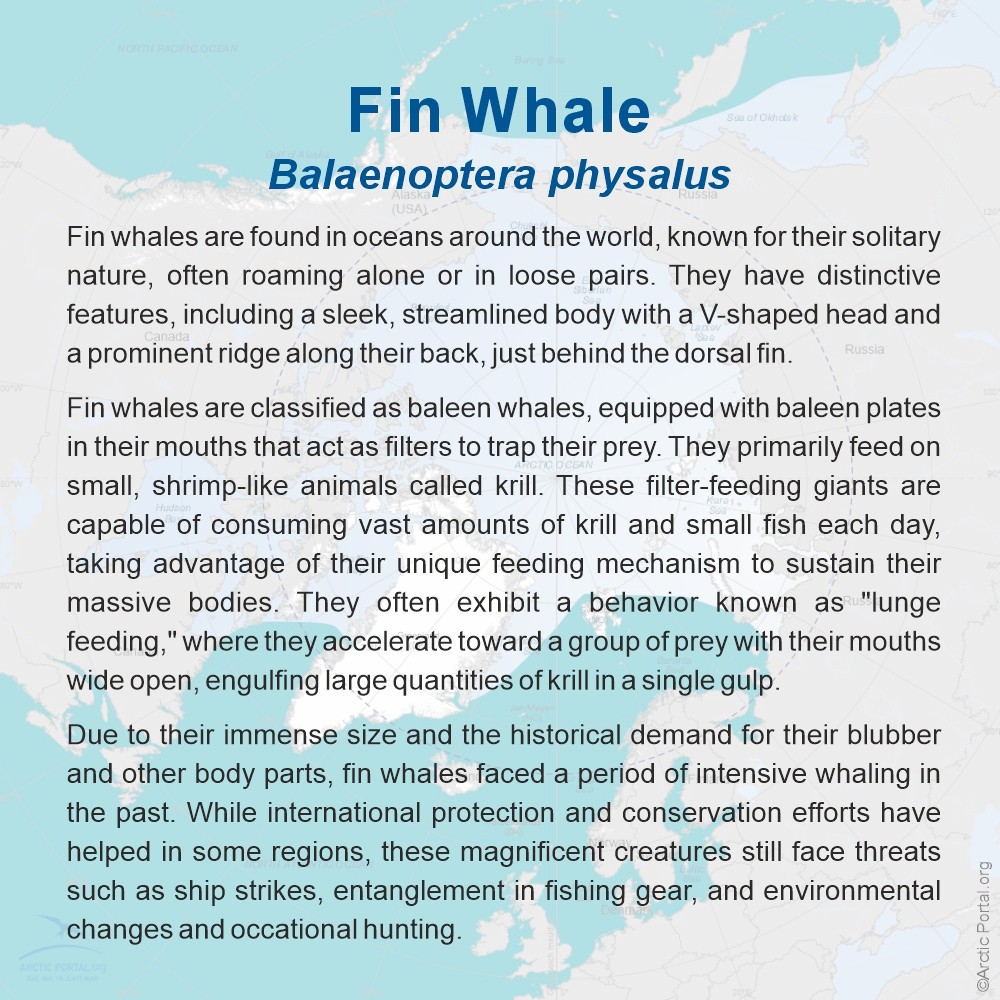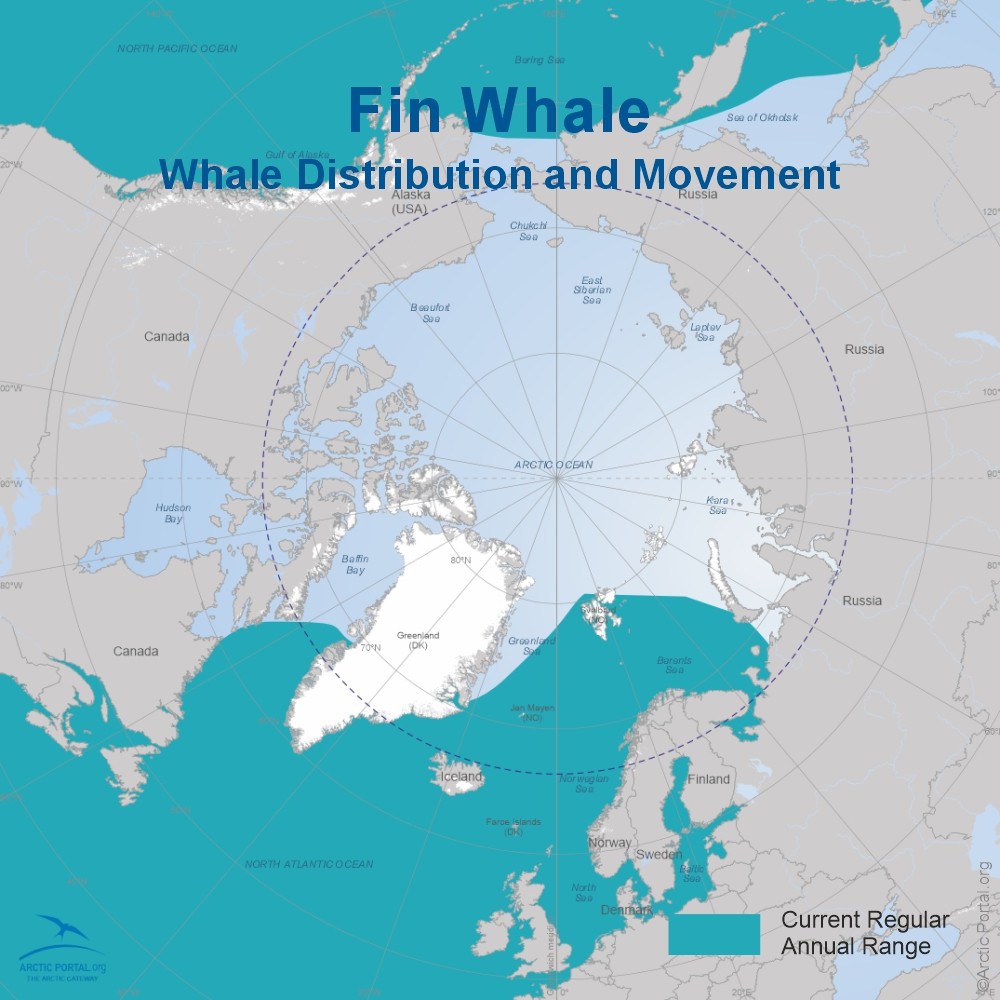The fin whale is the second-largest whale species and mammal on Earth, behind the blue whale.
The fin whale is the second-largest whale species and mammal on Earth, behind the blue whale.
These impressive marine creatures are renowned for their immense size, with adult fin whales reaching lengths of up to 24 m (80 ft) and weighing as much as 70 tons.
Despite their massive size, fin whales are graceful swimmers, capable of reaching speeds of up to 20 miles or 32 km per hour.
Global population is estimated around 100,000.
Fin whales are found in oceans around the world, known for their solitary nature, often roaming alone or in loose pairs. They have distinctive features, including a sleek, streamlined body with a V-shaped head and a prominent ridge along their back, just behind the dorsal fin.
Fin whales are classified as baleen whales, equipped with baleen plates in their mouth that act as filters to trap their prey. They primarily feed on small, shrimp-like animals called krill. These filter-feeding giants are capable of consuming vas amount of krill and small fish each day, taking advantage of their unique feeding mechanism to sustain their massive bodies. They often exhibit a behavior known as "lunge feeding", where they accelerate toward a group of prey with their mouths wide open, engulfing large quantities of krill in a single gulp.
Due to their immense size and the historical demand for their blubber and other body parts, fin whales faced a period of intensive whaling in the past. While international protection and conservation efforts have helped in some regions, these magnificent creatures still face threats such as ship strikes, entanglement in fishing gear, and environmental changes and occasional hunting.
See also our map on Fin Whale distribution and movement
Visit our Map Gallery Arctic Portal specializes in creating customized graphical maps that cover a range of significant Arctic topics with global recognition. We are continuously working on new maps and adding them to our Gallery.



